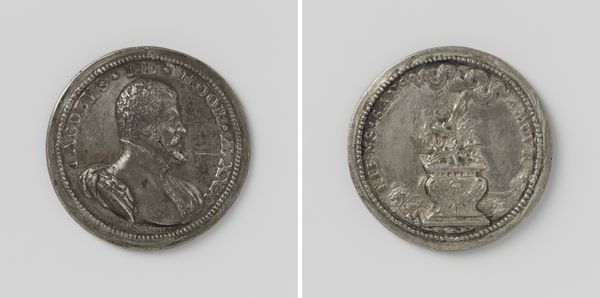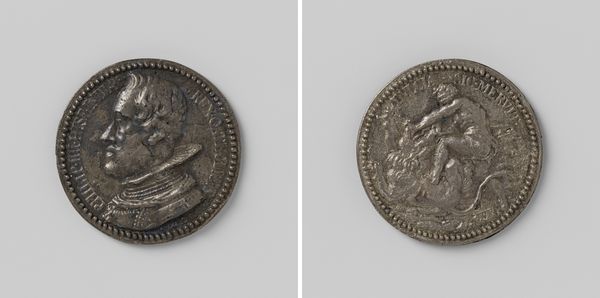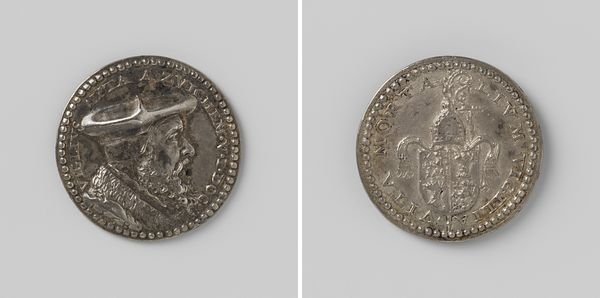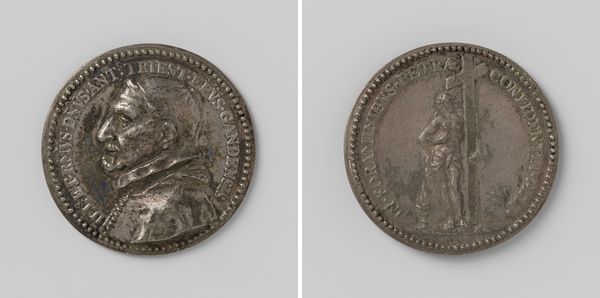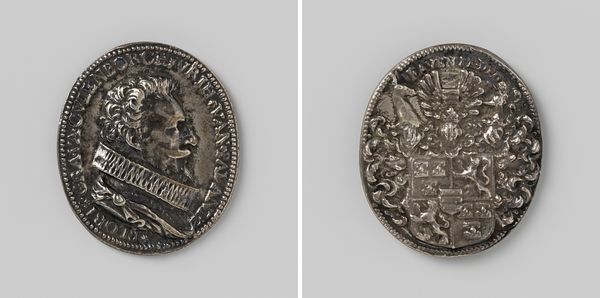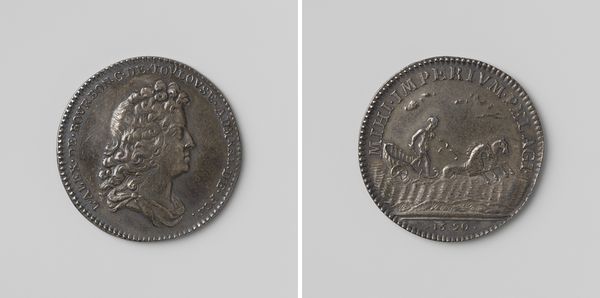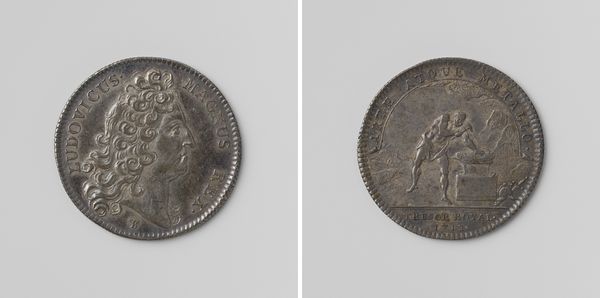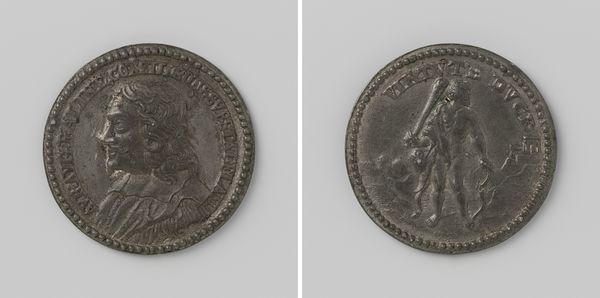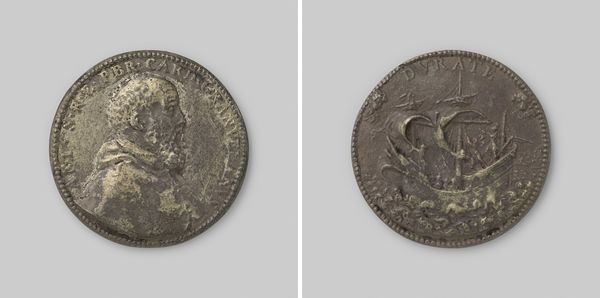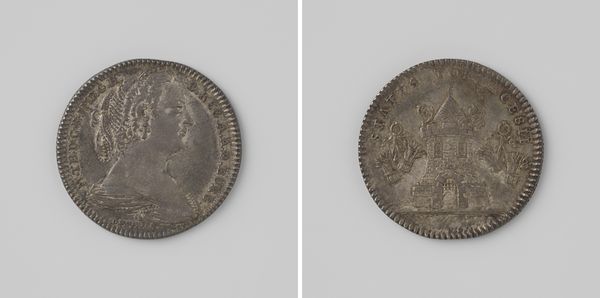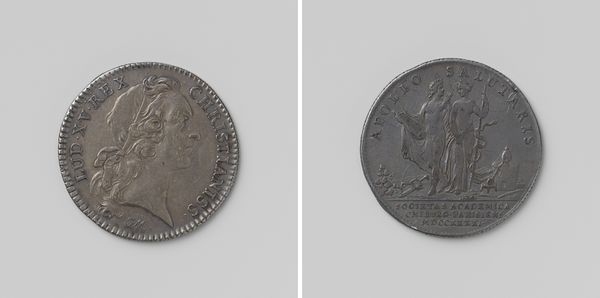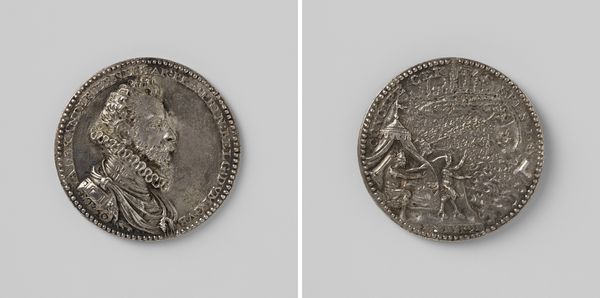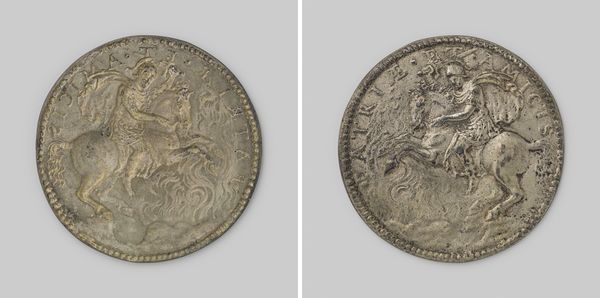
metal, relief, sculpture
#
portrait
#
metal
#
relief
#
mannerism
#
sculptural image
#
11_renaissance
#
sculpture
#
ceramic
Dimensions: diameter 3.6 cm, weight 10.15 gr
Copyright: Rijks Museum: Open Domain
Curator: Take a look at this Mannerist relief from 1579, crafted by Jacques Jonghelinck: it's a metal portrait of Matthias, Archduke of Austria and Governor of the Netherlands. Editor: Wow, even in this digital rendering, I can almost feel the weight and coolness of the metal. There's a solemnity, a gravitas emanating from the portrait side, juxtaposed by something wilder on the other side with the nude figure. Curator: The duality speaks volumes. This wasn't just a straightforward portrait. The inscription, the imagery of Victoria—it’s about power, negotiation, and fraught times in the Netherlands. Editor: I am immediately interested in that visual tension. On the portrait side, there's incredible detail in the ruff, capturing the material itself. On the reverse, what are those serpentine forms beside the figure, almost Medusa-like? Curator: Exactly! The other side is Victory herself. It's interesting to consider how Jonghelinck combined classical iconography with contemporary political messaging. What’s really interesting is examining his role not just as a metalworker but also as Master of the Mint; his access to materials was also key to his process and social role. Editor: Yes, considering that relationship to materiality—the economic system intertwined with representation...and the skill required to render these miniature details on such a tough material! Did he oversee a workshop where others might've helped execute the fine details, like the lettering? What would that division of labor look like? Curator: Likely, yes. That's important context for understanding how workshops were organized at this time. Considering this artwork offers an excellent point to consider what "skill" even signifies within the art world. And also a fascinating look into the political theater being produced through this coin or medallion during the Habsburg reign. How does propaganda impact its process? Editor: Absolutely. This work demonstrates how the Renaissance intersected with growing early-capitalist models of artistic production, too. It reframes a seemingly straightforward political token into a question about material value. Curator: The social contexts certainly shaped every curve of the metal, influencing who and how power was being circulated in the Netherlands, during the fraught end of the Renaissance.
Comments
No comments
Be the first to comment and join the conversation on the ultimate creative platform.
